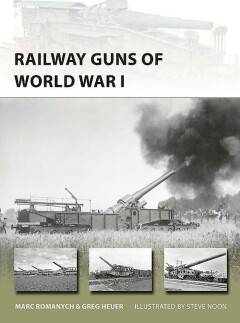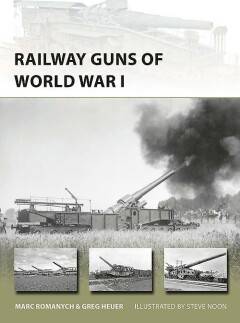
- Retrait gratuit dans votre magasin Club
- 7.000.000 titres dans notre catalogue
- Payer en toute sécurité
- Toujours un magasin près de chez vous
- Retrait gratuit dans votre magasin Club
- 7.000.000 titres dans notre catalogue
- Payer en toute sécurité
- Toujours un magasin près de chez vous
Description
World War I was the Golden Age of the railway gun. More railway artillery pieces were used during this war than in any other conflict, even though at the start of the war none of the armies had railway guns and the very idea of railway artillery was comparatively new. The impetus to build and field railway-mounted guns came from the stalemate of trench warfare. The first railway guns--fielded by the French army in early 1915--were simple, improvised designs made by mounting surplus coastal defense, fortress, and naval guns onto existing commercial railway carriages. These first guns were fielded to primarily provide heavy artillery support to the frontline infantry. The British and German Armies followed suit and soon railway guns were employed all along the Western Front. The use of railway artillery expanded to other fronts too, with Russia fielding several guns in 1915 and Italy in 1916.
Even the United States--which developed its artillery in close cooperation with the French--employed several models of railway guns in the final year of the war. All told, hundreds of railway artillery pieces were fielded during the war and, at war's end, several models of super-heavy railway guns were in design for use in 1919. This book details the design and development of railway guns during World War I from the very first basic designs to massive purpose-built "monster" railway guns. Accompanying the text are many rare, never before published photographs. Color illustrations depict the most important aspects of the railway guns.Spécifications
Parties prenantes
- Auteur(s) :
- Editeur:
Contenu
- Nombre de pages :
- 48
- Langue:
- Anglais
- Collection :
- Tome:
- n° 249
Caractéristiques
- EAN:
- 9781472816399
- Date de parution :
- 22-08-17
- Format:
- Livre broché
- Format numérique:
- Trade paperback (VS)
- Dimensions :
- 180 mm x 244 mm
- Poids :
- 158 g







